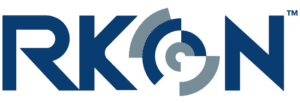The past two years have caused many organizations to adopt multiple technologies to ensure productivity in the wake of a disrupted and distributed workforce. And in some cases, employees went out on their own and got cloud-based solutions to share files, conduct remote meetings, and chat with colleagues. This latter trend is the infamous Shadow IT phenomenon, where the IT department doesn’t know these tech tools are being used.
There are at least two undesirable results of these actions: Many companies are supporting lots of tools they don’t need; and they may inadvertently be exposed to security risks from disconnected solutions, especially in the cases of Shadow IT.
There’s definitely a need to consolidate to save money and increase security.
Now, we’re not here to promote Microsoft or to say that they’ve got the best product on the market. But we recognize that many companies use M365. So, why not take full advantage of all it has to offer? To that end, let’s explore some of the tools in the M365 toolbox.
A peak into the ecosystem
We’ll start with Microsoft Teams. Based on our experience, we think it has become the Slack killer it was meant to be. That’s because it has been getting the lion’s share of Microsoft’s development time and money.
Teams gives users an “all-in-one place” to get their work done. It’s a workspace in which individuals can check their files, messages and chats, set up or attend a video conference. It also includes Viva Connections, where you can put your company’s Intranet and SharePoint. Connections appears as a button in Teams, right alongside chats and files.
From an end-user perspective, Teams is like a single pane of glass and it becomes easy to get work done. From an IT perspective, admins can see where in the tech stack that M365 sits, and they can easily wrap one compliance or one data-loss prevention policy around it.
If you want to take the employee experience to the next level, there’s the Microsoft Viva platform. It includes: a learning management system (Viva Learning); a knowledge center (Viva Topics); and advanced analytics for managers to better understand how employees are using the M365 suite to improve their productivity and wellbeing (Viva Insights).
For example, you could use Viva Learning for employee training. It includes 125 free courses from LinkedIn Learning and, if you pay additional licensing costs, you can add your own customized courses. IT can recommend specific modules to users or a department manager can assign courses to their team members.
Another advantage to the M365 ecosystem is the built-in, enterprise-grade security. For example, multifactor authentication is baked into Outlook and SharePoint. In addition, it’s easy to set up conditional access policies in Azure Active Directory.
We’re also seeing Microsoft Privileged Access Management (PAM) gain traction. It’s like having timebound admin credentials. PAM automates access and can revoke MFA credentials, for example, after a period of time. So if you give a contractor temporary access to M365, PAM knows to revoke those credentials so that contractor can’t login into your systems after a set period of time.
There are other advantages to focusing on one common set of tools like Microsoft Office. Our team has extensive experience in M365, as well as many other productivity solutions so that your company gets the most from its IT investments. We can help you set an IT roadmap, run IT diagnostics, deliver a cloud strategy, and ensure organization-wide strategy.
Reach out to us to learn more.
Get our full take on Microsoft 365 by listening to a recent episode of our SecureChat podcast. Listen Here.

